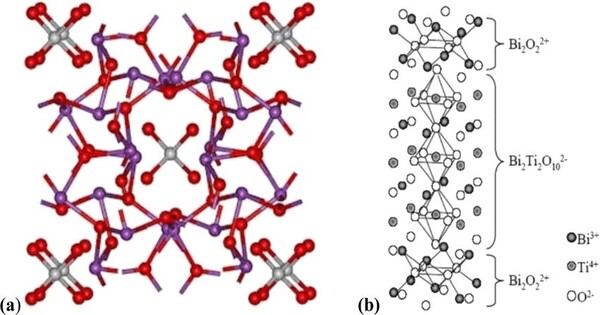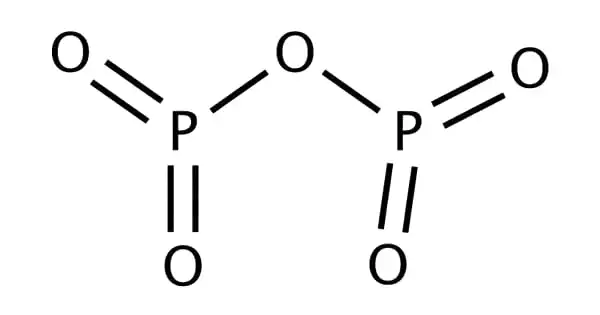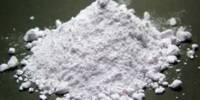Bismuth titanate or bismuth titanium oxide is a solid inorganic compound of bismuth, titanium and oxygen with the chemical formula of Bi12TiO20, Bi 4Ti3O12 or Bi2Ti2O7. It’s known for its high dielectric constant, making it useful in various electronic applications, especially in capacitors and piezoelectric devices. This makes it valuable in memory storage and sensor applications.
Bismuth titanate exhibits strong ferroelectric properties, which means it has a spontaneous electric polarization that can be reversed by an external electric field. This makes it useful in applications such as capacitors, memory devices, and piezoelectric sensors. It has a high dielectric constant, which means it can store a significant amount of electrical energy. This property is advantageous for various electronic components, including capacitors and insulators.
Synthesis
Bismuth titanate ceramics can be produced by heating a mixture of bismuth and titanium oxides. Bi12TiO20 forms at 730–850 °C, and melts when the temperature is raised above 875 °C, decomposing in the melt to Bi4Ti3O12 and Bi2O3.[4] Millimeter-sized single crystals of Bi12TiO20 can be grown by the Czochralski process, from the molten phase at 880–900 °C.
Properties
Bismuth titanate is a ceramic material that exhibits interesting properties. It also has ferroelectric properties, which means it can maintain a spontaneous electric polarization that can be reversed by an external electric field.
- Chemical formula: Bi12TiO20
- Molar mass: 2875.62
- Odor: odorless
- Density: 9.03 g/cm3
- Melting point: 875 °C (1,607 °F; 1,148 K) Decomposes to Bi4Ti3O12 and Bi2O3
- Solubility in water: insoluble
Applications
Bismuth titanates exhibit electrooptical effect and photorefractive effect, that is, a reversible change in the refractive index under applied electric field or illumination, respectively. Consequently, they have potential applications in reversible recording media for real-time holography or image processing applications.
It has interesting optical properties, including transparency in certain wavelength ranges, which can be useful in optical devices. It has good thermal stability, maintaining its ferroelectric properties over a wide temperature range.
















